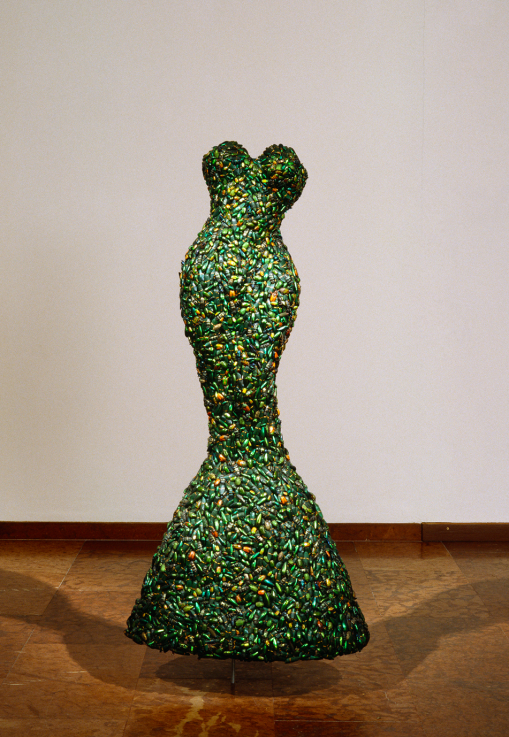Last year, Jan Fabre presented this installation in Tarragona, Spain, in three rooms separated by narrow gaps between them. Passage was originally the name of another work, created with a similar technique, using hundreds of beetles. lt consisted of three objects: a urinal (referring to Duchamp), a microscope and a cross, symbols of art, science and religion, characteristic of our century. In this installation, Passage refers to change, to metamorphosis, to the inner journey the artist has made, to life: from existence to non-existence and back. Fabre’s curious sculptures are composed of thousands of Scarab beetles kept together by a huge metal framework. Critics have said that Fabre's attraction to beetles can be traced back to the in-depth research he has made into the life of an ancestor, an insect scientist from the last century. lndeed, Fabre's beetle¬ -sculptures were preceded by numerous drawings and watercolours of the same subject. However, in his current practice, which incorporates performance, theatre and film, Fabre analyses the transition between the part and the whole, existence and non-existence. Fabre appeared on the international art-scene in the 198o's (1984, Venice Biennial, Belgian Pavilion and 1988, Documenta 8). His reputation as an international artist was secured in 1988 with Blue Room, a project for the Künstlerhaus Bethanien, Berlin, in which a room was lined with blue biro¬ -covered wall -paper. This was followed by a work which covered the facade of the Tivol Castle in wall -paper (1990, Antwerpen) and the creation of a cottage in Metropolis (1991, Martin Gropius Bau, Berlin). In Passage, the use of beetles deepens the same irrational richness of detail with philosophical meaning. Whilst the beetle is an insect which awakens negative associations for many people (for instance, if one thinks of the fate of the minor official in Franz Kafka's Metamorphosis), it is, at the same time, a sacred symbol of the other -world for Egyptians. This union of the sacred and absurd represents the cruel reality of life and simultaneously the essence of Jan Fabre’s message.

